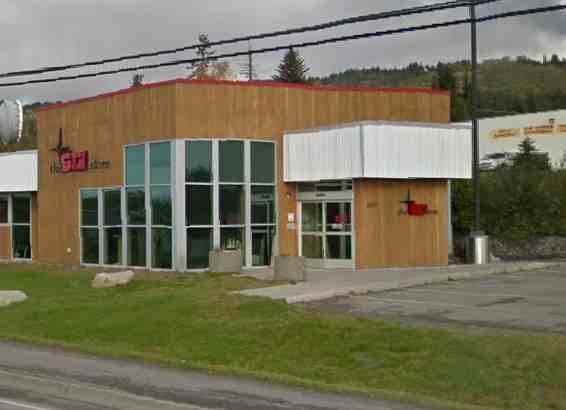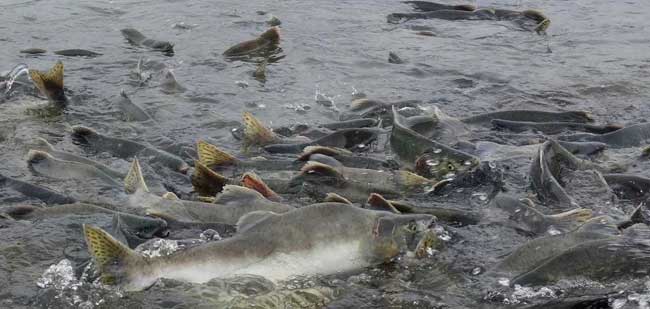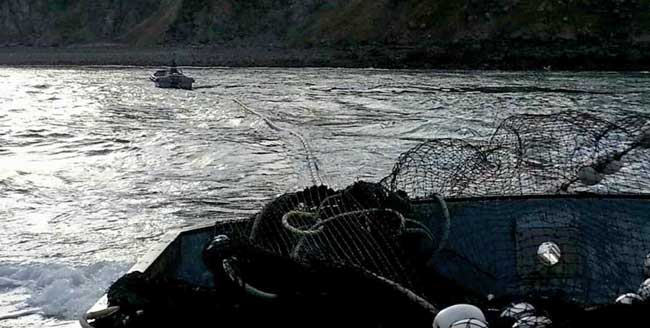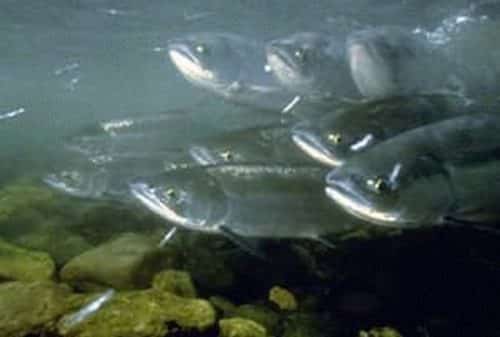
Commercial harvests of wild Alaska salmon rose to nearly 133 million fish through August 8, including upwards of 50 million sockeyes, while a weak catch of humpies in Southeast Alaska left the pink salmon preliminary harvest at about 62 million fish.
The commercial harvest of pink salmon in the Sitka area was in full swing, with a catch of 5.5 million humpies during the last opening, but so far the overall commercial harvest in Southeast Alaska stands at 14.9 million pinks, compared to a forecast of 43 million.
“We had some weakness in the southern areas, in Ketchikan, Petersburg and Juneau,” said Eric Coonradt, the state management biologist for salmon at Sitka. Just why that run in southern areas of Alaska was coming in weak is not known. While it probably has more to do with ocean temperatures, there are also a multitude of probable reasons.
In Prince William Sound meanwhile, the pink salmon commercial fishery was going strong, “with greater than 1.7 million fish per 14-hour period on every other day schedule that week,” said Alaska Department of Fish and Game management biologist Bert Lewis in Anchorage.
Prince William Sound Aquaculture Corp. cost recovery is making good progress and expected to finish later this week. There is strong wild stock escapement and harvest and hatchery run entry is steadily increasing, Lewis said.[xyz-ihs snippet=”Adsense-responsive”]The total Prince William Sound purse seine harvest through August 8 was 26 million fish. Adding the 2 million fish in hatchery cost recovery made for a preliminary harvest total of 28 million fish.
“The total harvest forecast is for 55 million pinks and we are approaching the 50 percentile of all pink salmon returns,” Lewis said. “We are tracking pretty close to forecast. The parent year for this season was an all-time record in 2015 of a total pink run of over 100 million fish, with a harvest of 97 million.”
Along with those 50 million sockeyes and some 62 million humpies, the statewide preliminary harvest totals compiled by ADF&G included in excess of 18 million chum, 1.9 million silver and 237,000 Chinook salmon.
Due to poor ocean survival conditions for Chinooks, which are persisting in Southeast Alaska and British Columbia, ADF&G put into effect on August 7 a restriction on harvests in coast wide fisheries directed at stocks originating in Southeast Alaska, Northern British Columbia, the Fraser River and the Washington coast. Inseason information from ADF&G, the Canadian Department of Fisheries and Oceans, and NOAA surveys off the coast of Oregon, Washington and the Gulf of Alaska all indicate that poor production conditions are currently occurring and will persist through at least 2018, ADF&G biologists said.
Saying it was a very difficult decision to make, ADF&G announced that retention of Chinook salmon would cease on August 10 in the Southeast Alaska commercial and recreational fisheries and that non-retention would continue through September.
Bristol Bay’s harvest stood at 39 million fish, including 37,627,000 sockeyes, 1.3 million chum, 40,000 coho, 39,000 king and 32,000 pink salmon. Cook Inlet has delivered to processors over 3 million salmon, including 1.9 million reds, 666,000 pinks, 356,000 chums, 159,000 silvers and 8,000 kings.
Fishermen’s News Online grants permission to the Alaska Native News to post selected articles. Read More at: Fishermen’s News Online.







